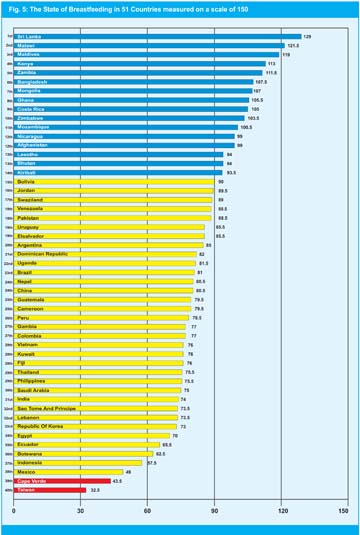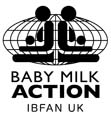World Breastfeeding Trends
We know how to improve breastfeeding rates, but is action being taken - or are our babies falling through the gaps?
Every year close to 136 million babies are born all over the world. Of them as many as 92 million are not able to experience the WHO’s recommended optimal feeding practices: beginning breastfeeding within one hour, being exclusively breastfed for the first six months, and timely and appropriate complementary feeding with continued breastfeeding after 6 months, up to 2 years. This is in spite of the risks to children’s health, development and survival and to their long-term health and prevention of non-communicable diseases.
In order to increase the rates of optimal feeding practices, WHO and UNICEF developed the Global Strategy for Infant and Young Child Feeding, which provides a framework for action to scale up breastfeeding and infant and young child feeding interventions. They also developed a tool to monitor these inputs. Based on these tools, the Breastfeeding Promotion Network of India/ International Baby Food Action Network (IBFAN), Asia, developed the World Breastfeeding Trends Initiative (WBTi), which measures inputs and generates national action.
The WBTi includes assessment, action, and advocacy. It is an innovative web tool giving universal access to this information, and leads to colour coding and objective scoring to make it easily understandable for the policy makers. It is the central strategy of the global Breastfeeding Initiative for Child Survival (gBICS), jointly launched by the IIBFAN and the World Alliance for Breastfeeding Action (WABA) in 2008.
WBTi indicators
MEASURING PROGRESS
The indicators for the 10 areas of action include:
• National Policy, Programme and Coordination
• Baby Friendly Hospital Initiative (Ten Steps to Successful Breastfeeding)
• Implementation of the International Code
• Maternity Protection
• Health and Nutrition Care Systems
• Mother Support and Community Outreach - Community-based Support for the Pregnant and Breastfeeding Mother
• Information Support
• Infant Feeding and HIV
• Infant Feeding During Emergencies
• Monitoring and Evaluation
HIGH FIVE
The indicators for five optimal IYCF practices include
• Initiation of Breastfeeding (within 1 hour)
• Exclusive Breastfeeding (for first 6 months)
• Median Duration of Breastfeeding
• Bottle-feeding (<6 months)
• Complementary Feeding (6-9 months)
The WBTi was earlier launched in 2004-05 in South Asia, and its success led to its introduction in other regions of Asia, Africa, the Arab world and Latin America in 2008, and in Oceania in 2010.
Introduced in 82 countries, the WBTi has led to 51 countries being assessed, ranked and colour-coded based on their scores (see below).
Five South Asian countries have done their 3rd assessment since 2004-05 and two countries in the Latin America and Caribbean region have completed their 2nd assessment since 2008-09. Many countries in Africa and Asia are in the process of conducting trend analysis with their 2nd assessment. (Work has also started in the UK.) This shows that the interest is growing to find the gaps and bridge them.
Extracted from Are our Babies Falling through the Gaps: The State of Policies and Programme Implementation of the Global Strategy for Infant and Young Child Feeding in 51 Countries:
http://www.worldbreastfeedingtrends.org
| Attachment | Size |
|---|---|
| WBTi51.jpg | 368.99 KB |







